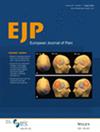Exploring the impact of perioperative analgesia on postoperative chronic analgesic prescriptions in patients with lung cancer undergoing minimally invasive thoracic surgery: A retrospective observational study
Abstract
Background
Lung cancer surgery is associated with a high incidence of chronic postsurgical pain (CPSP), which necessitates long-term analgesic prescriptions. However, while essential for managing pain, these have shown various adverse effects. Current guidelines recommend using peripheral nerve blocks over epidural anaesthesia for perioperative analgesia in minimally invasive thoracic surgery (MITS). However, the impact of perioperative analgesia on chronic analgesic prescriptions remains unclear. Therefore, this study investigated chronic analgesic prescription patterns following MITS in patients with lung cancer who received either perioperative epidural anaesthesia or nerve block.
Methods
We conducted a retrospective cohort study using data from the Japanese Diagnosis Procedure Combination database. Data were extracted from patients with primary lung cancer who underwent MITS between April 2018 and March 2022. Patients were divided into two groups based on the perioperative analgesia they received: the epidural anaesthesia group and the nerve block group. We compared the proportion of analgesic prescriptions 3–6 months postoperatively between both groups using multivariable logistic regression analysis. Inverse probability of treatment weighting was used to balance the covariates between the two groups.
Results
Among the 38,719 eligible patients, 4513 (11.6%) were prescribed postoperative analgesics. We found no significant difference in the proportion of analgesic prescriptions between the epidural anaesthesia and nerve block groups (odds ratio, 1.00; 95% confidence interval, 0.99–1.01).
Conclusions
This nationwide retrospective study suggests that the choice between perioperative epidural anaesthesia or nerve block in patients with lung cancer undergoing MITS does not influence the proportion of postoperative chronic analgesic prescriptions.


 求助内容:
求助内容: 应助结果提醒方式:
应助结果提醒方式:


